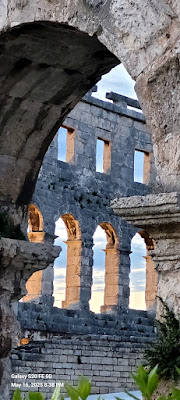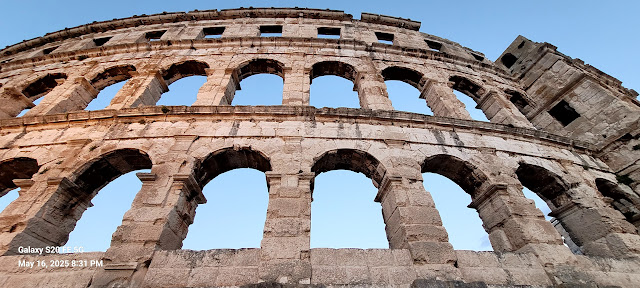The Pula Arena in Croatia is a spectacular sight--something to remember forever. Passing by it each day during a week-long stay in Pula became a familiar part of each day. There were quiet pauses to look through its massive rectangular windows, catching glimpses of the Adriatic Sea shimmering in the distance. The limestone always carried a bit of surprise, its shades changing with the time of day.
This amazing Roman amphitheater, also known as the Arena, was built between 27 BC and 68 AD, about the time the Colosseum was built in Rome. It lies along Via Flavia, the old road leading to Rome. The well-preserved oval-shaped structure is considered Croatia's best-preserved ancient monument. Ranked among the world's six largest surviving Roman arenas, it is the only one to still have all four side towers intact.
The Arena, with a seating capacity of 23,000, was enlarged to accommodate gladiatorial fights in 79AD. These brutal contests of gladiators (often prisoners) fighting with wild animals continued until they were banned in the 5th century. This was followed by a long period of neglect and devastation
Later in the Middle Ages, cattle could be seen grazing in the Arena along with occasional tournaments and medieval fairs. Restoration of the amphitheater began in the 19th century, and it was restored to its present state in 1932 with a seating capacity of 7,000
Today, this spectacular setting serves as a venue for numerous concerts, operas, ballets, sporting events, and the Pula Film Festival, one of the oldest film festivals in Europe. In addition, the tradition of gladiator fighting lives on in Pula when the Spectacvia Antiqua comes to town every summer and fall.
This picturesque setting ranks among the most beautiful and distinctive venues in the world. May the harmony between history and modernity continue to prevail in this charming ancient town by the sea.














